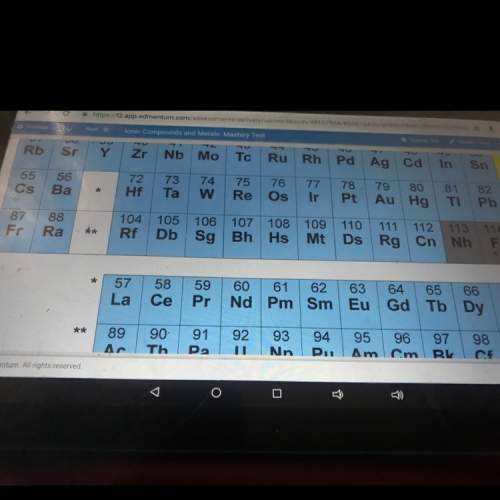
Chemistry, 14.08.2020 06:01, amoakoh800003
The reaction between calcium carbonate (CaCO3) and HCl produces calcium chloride (CaCl2), carbon dioxide (CO2), and water (H2O).What happens when the concentration of hydrogen chloride (HCl) molecules is doubled in this reaction? CaCO3 + 2HCl → CaCl2 + CO2 + H2O When the hydrogen chloride concentration doubles, the number of collisions between the reactants , which causes the rate of the forward reaction to .

Answers: 3
Other questions on the subject: Chemistry

Chemistry, 21.06.2019 22:30, 20heldmadison
Hot air balloons float in the air because of the difference in density between cold and hot air. in this problem, you will estimate the minimum temperature the gas inside the balloon needs to be, for it to take off. to do this, use the following variables and make these assumptions: the combined weight of the pilot basket together with that of the balloon fabric and other equipment is w. the volume of the hot air inside the balloon when it is inflated is v. the absolute temperature of the hot air at the bottom of the balloon is th (where th> tc). the absolute temperature of the cold air outside the balloon is tc and its density is ďc. the balloon is open at the bottom, so that the pressure inside and outside the balloon is the same. as always, treat air as an ideal gas. use g for the magnitude of the acceleration due to gravity.
Answers: 1



Chemistry, 22.06.2019 05:30, MansellS5529
A3.37-mg sample of protein was chemically digested to convert its nitrogen into ammonia and then diluted to 100.0 ml. then 10.0 ml of this solution was placed in a 50-ml volumetric flask and treated with 5 ml of phenol solution plus 2 ml of sodium hypochlorite solution. the sample was diluted to 50.0 ml, and the absorbance at 625 nm was measured in a 1.00-cm cuvette and found to be 0.486. for reference, a standard solution was prepared from 10.0 mg of nh4cl (molar mass = 53.49 grams/mole) dissolved in 1.00 l of water. then 10.0 ml of this standard was placed in a 50-ml volumetric flask, treated in the same manner as the unknown, and the absorbance found to be 0.323. finally, a reagent blank was prepared using distilled water in place of unknown, it was treated in the same manner as the unknown, and the absorbance found to be 0.076. calculate the weight percent of nitrogen in the protein.
Answers: 1
Do you know the correct answer?
The reaction between calcium carbonate (CaCO3) and HCl produces calcium chloride (CaCl2), carbon dio...
Questions in other subjects:



Mathematics, 17.09.2019 23:30






Mathematics, 17.09.2019 23:30







